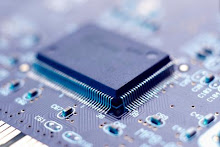2 years ago I moved my website from WebhostingBuzz to a dedicated server in SoftLayer and has been using it until today. The server was considered quite powerful then and luckily it has been able to support this blog and forum without giving any major downtime. There are still times when this website gets a surge of visitors and caused the server to crash. Here are my current dedicated hardware specification. Single processor quad core Intel Xeon X3220, 8GB DDR2 RAM, 100Mbps uplink, 2 x 73GB SA-SCSI 15K RPM hard drives WITHOUT RAID and I am paying a whopping $349 every month for the past 2 years.
Recently I found out that the monthly price for X3220 and X3230 is the same except there is an additional one time $49 setup fee. I figured that the X3230 should be faster than the X3220, so I went ahead and ordered the upgrade which was performed last weekend. I didn’t really know what are the differences because I never really performed any benchmark.
Sometimes I do felt like I am paying too much for the server rental in SoftLayer so I searched around and I finally found a datacenter that was offering a much better price with a more powerful server compared to SoftLayer.
My current SoftLayer dedicated server specification:
CPU: Intel Xeon 3230 4×2.66GHzMy upcoming new NetDepot dedicated server specification:
Memory: 8GB DDR2 RAM
Hard Drive: 2 x 73GB SA-SCSI 15K RPM without RAID
Bandwidth: 2000GB (100Mbps uplink)
Annual Price: $4212
CPU: Dual Intel Xeon E5520 Nehalem 8×2.26GHzAs you can see I am getting a way more powerful processor with an increased of memory and also RAID 1 for hard drive mirroring. The best part is the price that I get from NetDepot is much cheaper than SoftLayer. The first year price is a bit higher compared to the second year onwards because of the “buydown” option where I pay for the upgrades once and never had to pay for it again. The server migration will be done somewhere end of this month to early of March and the whole process should be transparent.
Memory: 12GB DDR3 RAM
Hard Drive: 2 x 146GB SA-SCSI 15K RPM with RAID 1
Bandwidth: 3000GB (100Mbps uplink)
First year Annual Price: $3590.2
Second Year Onwards: $1771.2
Anyway, I wanted to share on how to compare CPU speeds and performance based on benchmark reports. Like I said earlier, I didn’t know what are the difference between a X3220 and X3230 or X3230 vs E5520 in numbers so these reports would really help.
1. PassMark CPU Benchmark Charts
PassMark Software has delved into the thousands of benchmark results that PerformanceTest users have posted to its web site and produced five Intel vs AMD CPU charts to help compare the relative speeds of the different processors. Included in this list are CPUs designed for servers and workstations (Intel Xeon and AMD Opteron processors), desktop CPUs (Intel Core2 Quad, Intel Core i7, Intel Core2 Extreme and AMD Phenom II processors), in addition to mobile CPUs.
2. frybench
Frybench is an open public benchmark based on RandomControl’s flagship product, fryrender, to which anyone could submit performance measurements. Fryrender’s core doesn’t let a single CPU cycle be wasted. Its routines have been written to be cache efficient, and to take the maximum advantage possible of the new multi-threading capabilities present in modern CPU architectures.
3. Futuremark Benchmark Results
Futuremark has public benchmark results but the search form makes it hard to find for the CPU score that you’re looking for. You can search for what kind of processor such as Intel Core 2 Quad but can’t search for the exact processor number such as Q6600, Q6700 or E5520. So far I could only find this 3 sites that are offering up to date CPU benchmark reports. If you know any, do let me know so I can add it to the list.






0 comments:
Post a Comment